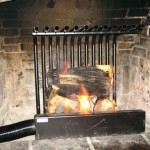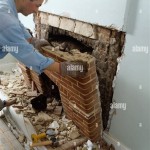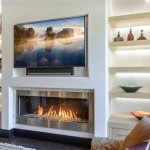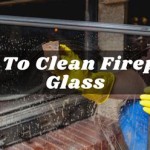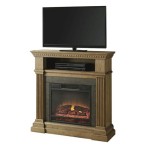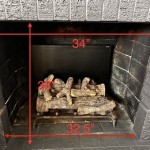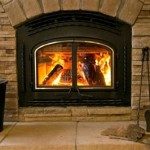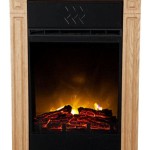Fireplace Chimney Pipe: A Vital Component for Safe and Efficient Fireplaces
A fireplace chimney pipe is a vital component of any fireplace system. It serves as the conduit through which smoke and combustion byproducts are safely expelled from the fireplace and into the atmosphere. Without a properly functioning chimney pipe, a fireplace would be unsafe to use, as smoke and harmful gases could build up within the home, posing a serious health hazard.
The chimney pipe acts as a vertical exhaust duct, drawing hot gases and smoke upward with the help of the natural draft created by the temperature differential between the warm air inside the fireplace and the cooler air outside. This upward flow of air helps to prevent the buildup of smoke and soot within the fireplace, ensuring that the fire burns efficiently and safely.
Chimney pipes are typically constructed from materials such as clay, metal, or concrete, each offering unique advantages and disadvantages. The choice of material will depend on factors such as the fireplace design, budget, and local building codes.
Types of Fireplace Chimney Pipes
There are several different types of fireplace chimney pipes available, each designed to meet specific needs and applications. The most common types of chimney pipes include:
- Clay Chimney Pipes: These are traditional, durable, and often cost-effective. Clay pipes are typically made from fireclay, which can withstand high temperatures. However, they can be heavy and prone to cracking if not properly installed.
- Metal Chimney Pipes: Metal chimney pipes, typically made from stainless steel or galvanized steel, are lightweight and easy to install. They are also readily available and come in a range of sizes and styles. However, metal pipes can be prone to corrosion, especially in areas with high humidity.
- Concrete Chimney Pipes: Concrete chimney pipes are a durable and fire-resistant option, but they are also heavy and require specialized installation techniques. Concrete pipes are often used for larger fireplaces or in applications where fire safety is a paramount concern.
- Insulated Chimney Pipes: Insulated chimney pipes are designed to reduce heat loss from the flue, increasing efficiency and reducing the risk of condensation. These pipes are often made from stainless steel with a layer of insulation wrapped around the outer surface.
Key Considerations for Choosing a Chimney Pipe
Several factors should be considered when choosing a chimney pipe, including:
- Fireplace Type: The type of fireplace will dictate the size, material, and construction of the chimney pipe. For example, a wood-burning fireplace will require a larger and more robust chimney pipe than a gas fireplace.
- Fuel Type: The type of fuel used in the fireplace, such as wood, gas, or pellets, will also influence the chimney pipe selection. Wood-burning fireplaces require pipes capable of handling high temperatures and creosote build-up, while gas fireplaces may require different materials and construction methods.
- Local Building Codes: Local building codes will often specify the minimum requirements for chimney pipe size, material, and installation methods. It is essential to check with the local authorities before installing a new chimney pipe.
- Budget: Chimney pipes come in a wide range of prices, depending on the material, size, and features. It is important to set a budget and find a chimney pipe that fits within your financial constraints.
- Aesthetics: Chimney pipes are visible components of the fireplace and can impact the overall aesthetic appeal of the room. Choosing a chimney pipe that complements the style of the fireplace and surrounding décor is important.
Installing a Chimney Pipe
Installing a chimney pipe is a complex and potentially hazardous task, requiring specialized knowledge and skills. It is highly recommended to hire a qualified professional to install or repair a chimney pipe. An experienced chimney sweep or contractor will have the necessary expertise to ensure the chimney pipe is correctly installed and meets all safety requirements.
A proper chimney pipe installation involves several steps, including:
- Planning and Design: The first step is to plan the installation, considering factors such as the fireplace type, fuel type, and building codes. A professional will assess the existing chimney and determine the appropriate size, material, and construction method for the chimney pipe.
- Preparation: Once the design is finalized, the existing chimney needs to be prepped for installation. This may involve cleaning, repairing, or sealing existing components.
- Installation: The chimney pipe is then installed, connecting to the fireplace and extending up through the roof. The installation process will vary depending on the type of pipe and the chimney structure.
- Inspection and Testing: Once installed, the chimney pipe must be thoroughly inspected and tested to ensure proper function and safety. A professional will use specialized tools and techniques to evaluate the chimney pipe's draft, integrity, and leak-free operation.

What Is A Chimney Flue The Mad Hatter

7 Inch Double Wall Stove Pipe Insulated Chimney

Multi Floor 6 Inch Duratech Chimney Kit

Flue Pipe Chimney Greenstone Soapstone Masonry Heaters

Tlc Chimney System

Vented Vs B Vent Direct Free Dixie S

Imperial Black Matt Stove Pipe 0 45 Degree Adjustable Elbow Us Fireplace

Chimney Liners Pipe Installation Raleigh Chimneys Plus

Allfuel Hst 8 In X 1 Anchor Plate For Double Wall Chimney Pipe Bl Ev Rb Sht8an01 The Home Depot

All About Prefabricated Fireplaces Chimney Savers
Related Posts

